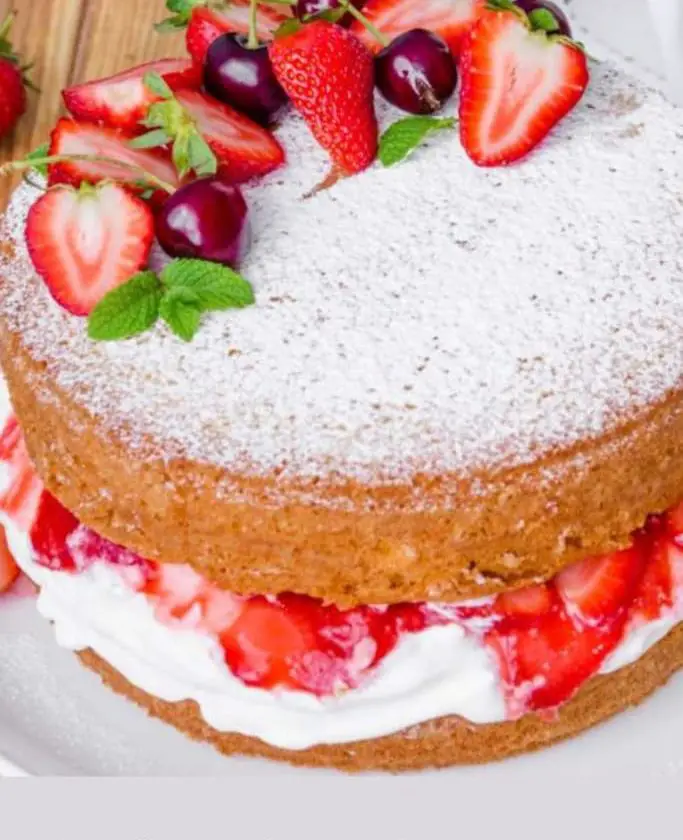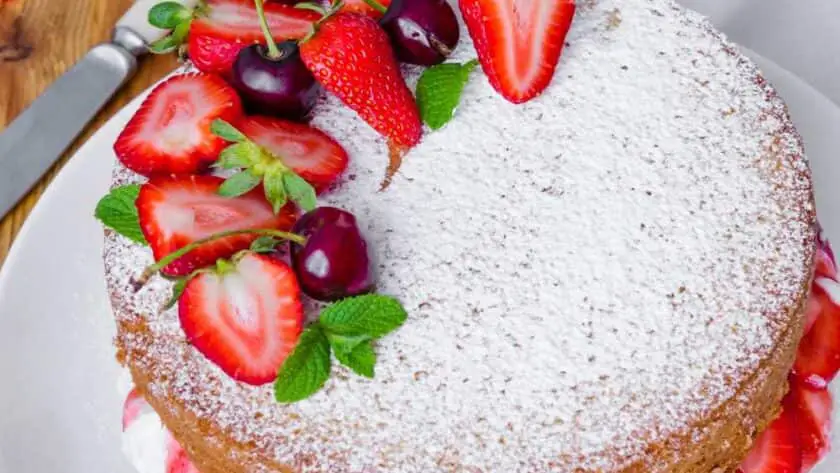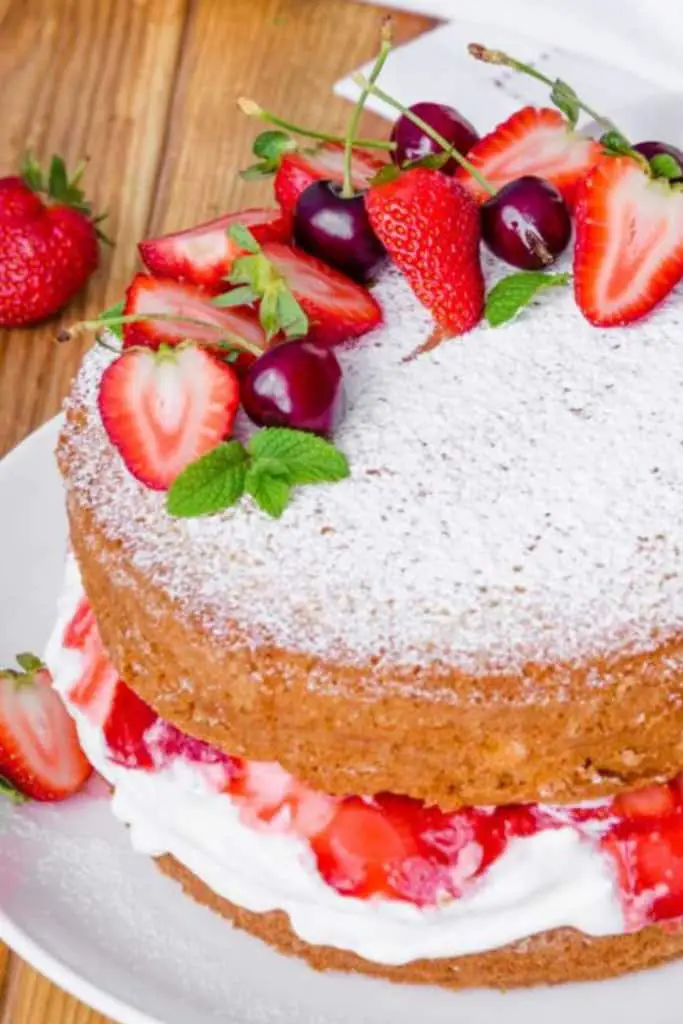
The Nigella Victoria Sponge is a classic British cake that has graced afternoon tea tables for generations. This exquisite dessert pairs fluffy, light sponge layers with a harmonious filling of fresh cream and jam, embodying the essence of traditional English baking. Ideal for celebrations, gatherings, or the simple joy of a tea-time treat, this recipe promises to delight.
In this guide, I will walk you through the creation of the Nigella Victoria Sponge, offering step-by-step instructions, essential tips, and some delightful variations to customize this classic cake to your taste.
What is Nigella Victoria Sponge Recipe?
The Nigella Victoria Sponge is a quintessential English cake, named after Queen Victoria, who was known to enjoy this sweet treat with her afternoon tea. It consists of two light and airy sponge cakes sandwiched together with a layer of jam and whipped cream.

Other Popular Cake Recipes
Why You’ll Love This Recipe
- Simple Ingredients: Utilizes basic pantry staples.
- Versatility: Perfect for any occasion, from casual to festive.
- Customizable: Easy to adapt with different fillings and flavors.
- Classic Taste: Delivers the timeless charm of British baking.
Ingredients Needed to Make Nigella Victoria Sponge
You need the following ingredients:
- 225g (8 oz) Self-raising flour, sifted
- 225g (8 oz) Unsalted butter, at room temperature
- 225g (8 oz) Caster sugar
- 4 Large eggs
- 2 tsp Baking powder
- 2-3 tbsp Milk, to adjust consistency
- 100g (3.5 oz) Strawberry or raspberry jam
- 150ml (5 fl oz) Double cream, whipped to soft peaks
- Icing sugar, for dusting
Instructions to Make Nigella Victoria Sponge
Here is step by step guide to make Nigella Victoria Sponge
What Do I Serve With Nigella Victoria Sponge?
A Nigella Victoria Sponge cake is a versatile dessert that pairs beautifully with a variety of accompaniments. Here are some delightful options to enhance your tea-time or dessert experience.
- Fresh Berries: Serve with a side of fresh strawberries, raspberries, or blueberries for a refreshing touch.
- Clotted Cream: Offer a dollop of clotted cream alongside for an authentic British tea-time treat.
- Ice Cream: A scoop of vanilla ice cream makes a wonderful companion to the sponge cake, especially during warmer months.
- Dessert Wines: Pair with a sweet dessert wine or a sparkling Moscato for a sophisticated finish.
- Tea or Coffee: Brew a pot of Earl Grey tea or serve it with freshly made coffee to complement the flavors of the cake.

Pro Tips to Make Perfect Nigella Victoria Sponge
Achieving the perfect Nigella Victoria Sponge requires attention to detail. Here are some expert tips to ensure success every time.
- Room Temperature Ingredients: Ensure all your ingredients, especially butter and eggs, are at room temperature to achieve a smooth batter.
- Do Not Over-mix: Mix the batter just until the ingredients are combined to keep the sponge light and airy.
- Check Oven Temperature: Use an oven thermometer to verify your oven’s temperature for accurate baking.
- Cool Completely Before Assembling: Allow the cakes to cool thoroughly before spreading jam and cream to prevent melting.
- Use Quality Ingredients: The simplicity of this cake means the quality of each ingredient shines through, so choose the best you can afford.
Variations of Nigella Victoria Sponge
The classic Nigella Victoria Sponge is a canvas for creativity. Experiment with these variations to suit your taste or occasion.
- Lemon Curd Filling: Swap the traditional jam for lemon curd and add lemon zest to the whipped cream for a citrusy twist.
- Chocolate Sponge: Add cocoa powder to the batter for a chocolate version, paired with cherry jam and whipped cream.
- Coffee Flavored: Infuse the cake with coffee by adding espresso powder to the batter and a coffee-flavored cream filling.
- Almond Sponge: Replace a portion of the flour with ground almonds and add almond extract to the batter for a nutty flavor.
- Seasonal Fruit: Top the cake with seasonal fruit and flavored cream (like mascarpone with orange zest) for a fresh take.
How do I Store Nigella Victoria Sponge Leftovers?
Proper storage is key to enjoying your Nigella Victoria Sponge cake for as long as possible. Here’s how to keep your leftovers fresh and delicious.
- Airtight Container: Store the cake in an airtight container at room temperature for up to 3 days.
- Refrigerate for Longer Freshness: If filled with cream, refrigerate and consume within 2 days.
- Separate Layers: If possible, store sponge layers and filling separately and assemble before serving.
- Avoid Direct Sunlight: Keep the cake in a cool, dark place to prevent the sponge from drying out.
- Freezing: For longer storage, freeze the sponge layers wrapped in cling film and a layer of foil for up to 3 months. Thaw overnight at room temperature before filling.
How do I Reheat Nigella Victoria Sponge Leftovers?
While the Nigella Victoria Sponge is traditionally enjoyed at room temperature, you might find yourself wanting to warm it slightly, especially if it has been refrigerated.
- Room Temperature: Best enjoyed at room temperature, so remove from the fridge 30 minutes before serving.
- Microwave: If you prefer it slightly warm, microwave a slice for 5-10 seconds. Be cautious not to melt the cream.
- Oven: Warm it in a preheated oven at 100°C (212°F) for a few minutes. Cover with foil to prevent drying out.
- Avoid Overheating: Heating too much can cause the sponge to dry out and the cream to melt, altering the texture and flavor.
Nutrition Value (Per Serving, based on 10 servings)
- Calories: Approximately 450 kcal
- Fat: 27g (Saturated Fat: 17g)
- Carbohydrates: 47g (Sugar: 29g)
- Protein: 6g
- Fiber: 1g
- Cholesterol: 145mg
- Sodium: 200mg
